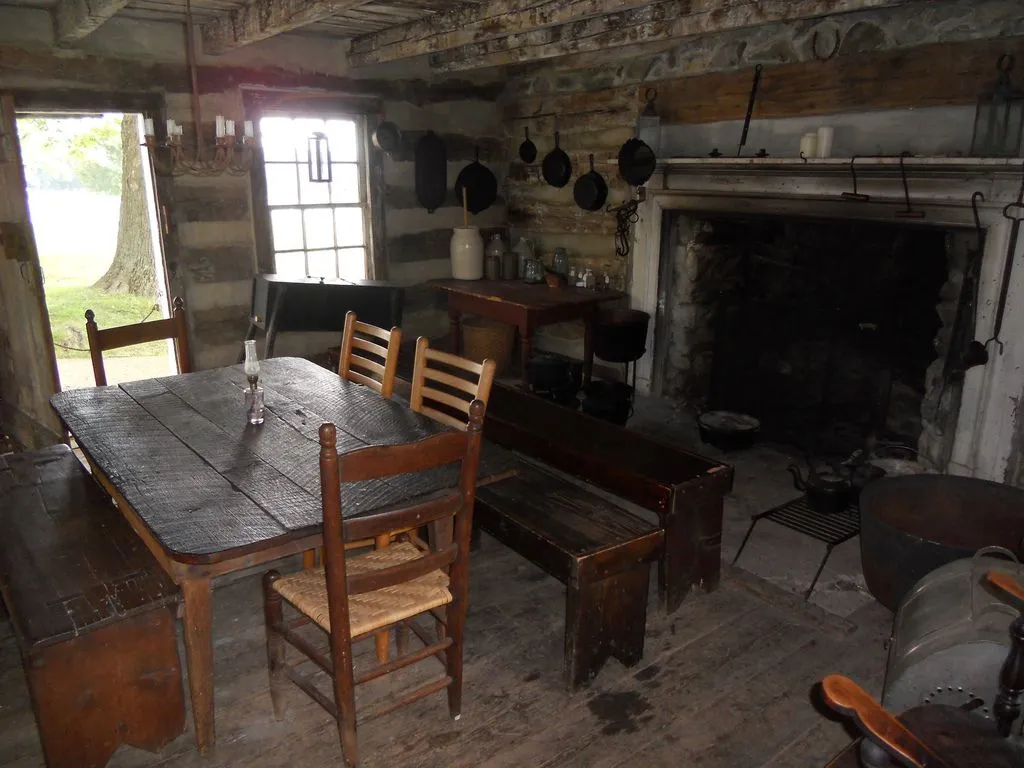Step back in time and transform your home with the charm of summer kitchen decor from the 1800s. These kitchens were more than just spaces for cooking they were the heart of the home during the warmer months, offering respite from the heat and a connection to nature. This guide will provide you with the top 5 tips for recreating this timeless aesthetic in your modern or historic home. From embracing natural light to incorporating rustic materials and vintage finds, discover how to bring the warmth and simplicity of 1800s summer kitchens into your living space. With these tips, you will not only design a beautiful kitchen but also create a functional and inviting space that reflects the elegance of a bygone era. Get ready to be inspired and embark on a journey through history, one design choice at a time. Let’s explore how to infuse your kitchen with the essence of the 1800s.
Summer Kitchen Decor 1800s Top 5 Tips
Understanding 1800s Summer Kitchens
Summer kitchens were a practical response to the challenges of the 1800s. During the hot summer months, cooking and food preparation often moved out of the main house to prevent overheating. These kitchens were typically detached buildings or separate rooms, designed to keep the main living area cool and comfortable. This often resulted in the use of natural materials and an emphasis on functionality. These spaces often showcased the family’s resourcefulness and connection to the land, making them a vital part of daily life. The design and purpose of the summer kitchen was a unique solution to the environmental and practical demands of the time. They offered a refuge from the heat and a dedicated space for preserving food and preparing meals. This practical separation also minimized fire hazards, an important consideration in an era when fire was a constant threat.
The Purpose of Summer Kitchens
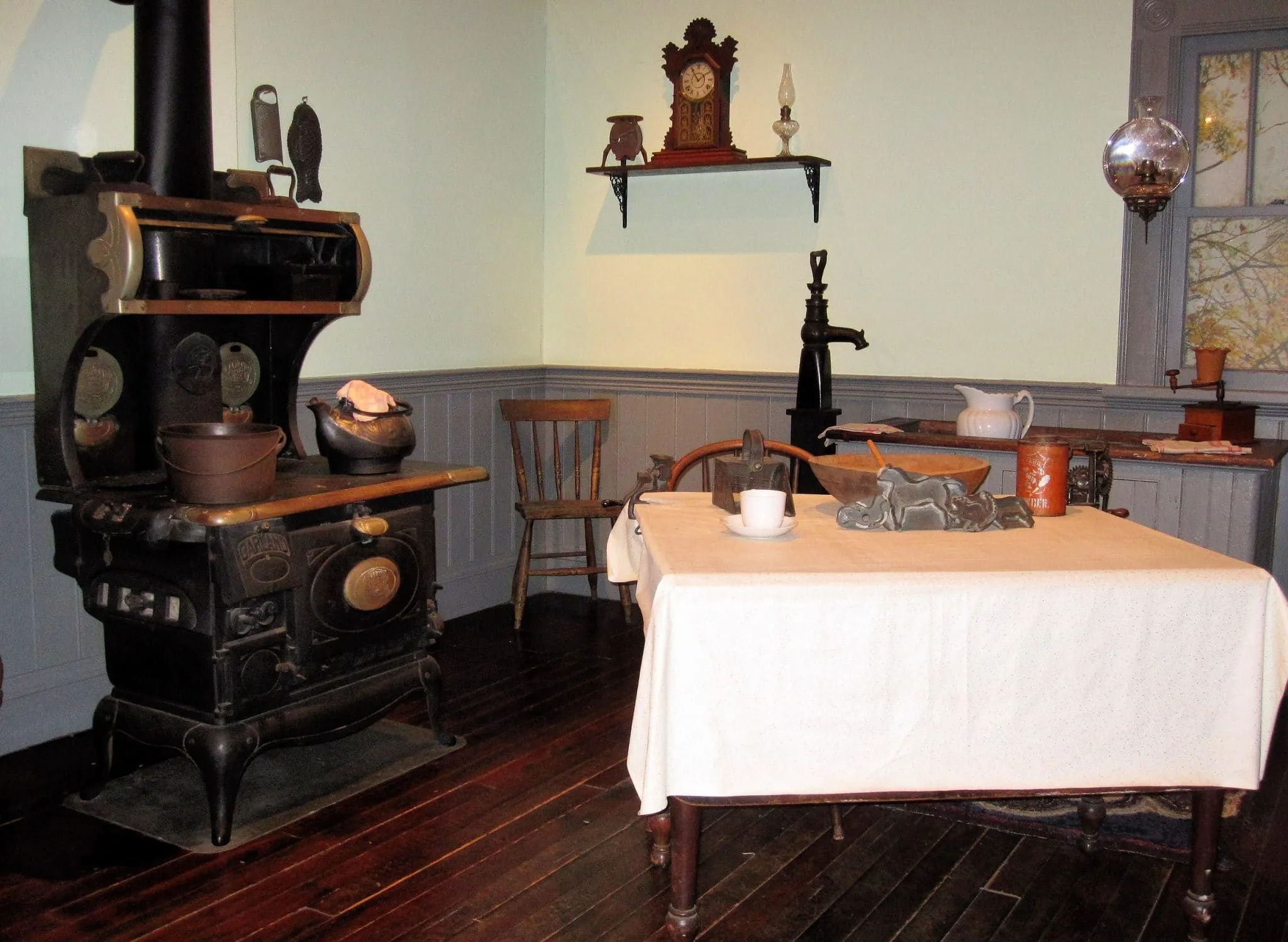
The primary purpose of a summer kitchen was to keep the main house cool during the hot summer months. This was achieved by moving the heat-generating activities of cooking and food preservation to a separate structure or room. Beyond cooling the home, summer kitchens were also a hub for preserving seasonal harvests. They often included features like root cellars, smokehouses, and areas for canning and drying fruits and vegetables. Moreover, these spaces served as a social gathering spot, where families and neighbors could come together to prepare food, share stories, and enjoy the summer weather. The summer kitchen was a functional space that promoted comfort, resourcefulness, and community.
Key Design Elements of 1800s Summer Kitchens
1800s summer kitchens were characterized by simplicity, functionality, and a strong connection to the outdoors. Key design elements included large windows for natural light and ventilation, often shaded by porches or trees. Rustic materials such as wood, stone, and brick were prevalent, providing durability and a connection to nature. The interiors were typically sparsely furnished, with emphasis on practicality, featuring a large cooking hearth or stove, work tables, and storage for food and utensils. The overall aesthetic was one of understated elegance, reflecting the resourcefulness and practicality of the time. The use of natural light, ventilation, and durable materials ensured that the space was both functional and comfortable during the summer months.
Top Tip 1 Embrace Natural Light
One of the defining features of 1800s summer kitchens was the abundance of natural light. Large windows were crucial for ventilation and to keep the space airy and cool. Maximizing natural light will make your kitchen feel more spacious and inviting. Consider using sheer curtains or no window coverings at all to allow light to flood in. Natural light not only makes a space feel more open but also reduces the need for artificial lighting during the day, conserving energy. Think about the placement of windows and how the sun moves throughout the day to determine the best window treatment options.
Maximizing Light in Your Kitchen
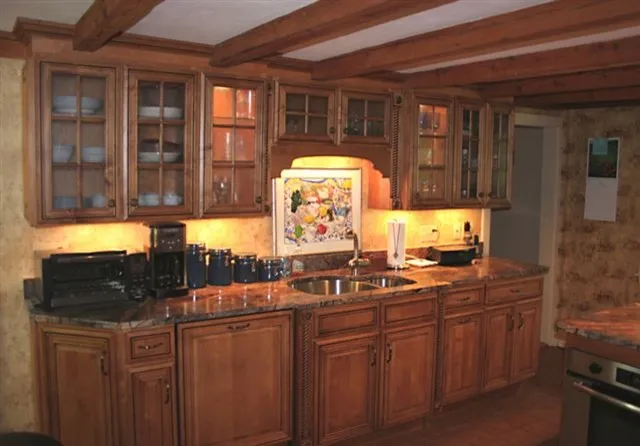
To maximize light in your kitchen, start by ensuring windows are clean and unobstructed. Prune any trees or bushes that might be blocking sunlight. Use light-colored paint on walls and ceilings to reflect light, making the space feel brighter. Consider adding a skylight or sun tunnel if possible to bring in even more natural light. Choose light-colored flooring, which also reflects light. If you have dark cabinets, consider painting them a lighter color. Finally, use mirrors strategically to bounce light around the room, creating an illusion of more space and brightness. These elements work in harmony to create a bright and cheerful atmosphere.
Choosing the Right Window Treatments
The right window treatments can enhance the natural light while also providing privacy and protection from the sun. In the 1800s, sheer curtains were a popular choice, as they allowed light to filter through while still offering some privacy. Today, consider options like linen curtains, which are lightweight and breathable, or bamboo shades, which add a natural touch. Avoid heavy drapes that can block light. For a more modern approach, use roller shades made from light-filtering fabric. Choose window treatments in light, neutral colors to keep the space feeling bright and airy. Remember to consider the functionality as much as the aesthetic when selecting window treatments.
Tip 2 Use Rustic Materials
Rustic materials are at the heart of the 1800s summer kitchen aesthetic. These materials evoke a sense of history and warmth, creating a welcoming atmosphere. Think about incorporating wood, stone, and brick into your kitchen design. These natural materials not only add character but also provide durability and a connection to nature. Consider the materials used for countertops, flooring, and wall accents. The right combination of rustic materials can transform your kitchen into a space that feels both authentic and inviting. By choosing these materials, you bring a piece of history into your home.
Selecting Appropriate Materials
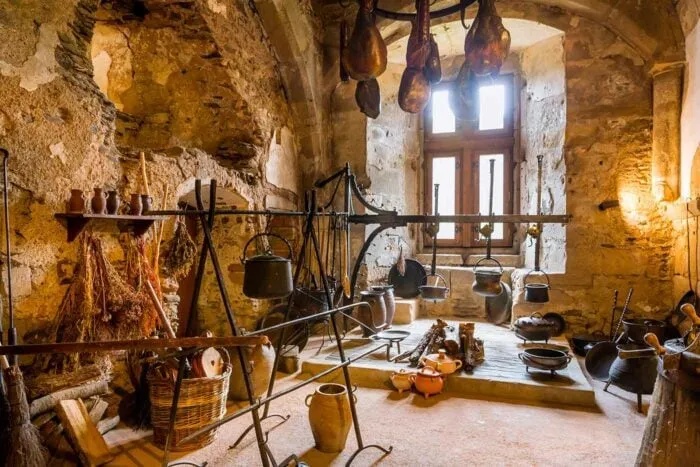
When selecting materials, prioritize durability and authenticity. For countertops, consider butcher block, soapstone, or granite. These materials are reminiscent of those used in 1800s kitchens and offer both beauty and functionality. For flooring, opt for wood planks, brick, or stone tiles, which provide a timeless look and can withstand the wear and tear of a busy kitchen. On the walls, exposed brick, shiplap, or wood paneling add a rustic touch. Choose materials with natural imperfections and variations, as this adds to the character and charm. Make sure the materials are easy to clean and maintain, ensuring your kitchen remains both beautiful and practical.
Incorporating Wood and Stone
Wood and stone are essential components of rustic kitchen design. Wood can be used for cabinets, countertops, flooring, and open shelving. Choose reclaimed wood for added character and sustainability. Stone can be incorporated through countertops, backsplashes, and flooring. Consider using natural stone like granite, slate, or limestone. To create a cohesive look, select materials that complement each other. Mix and match different types of wood and stone to add visual interest and depth to your kitchen. The combination of wood and stone creates a warm, inviting, and historically accurate aesthetic.
Tip 3 Incorporate Vintage Decor
Vintage decor is crucial for achieving the authentic 1800s summer kitchen aesthetic. Incorporating vintage items adds character and a sense of history. Look for items that reflect the era, such as enamelware, cast iron cookware, and antique utensils. Vintage decor is more than just aesthetics; it also connects you to the past and adds a unique charm to your space. The right pieces can transform a modern kitchen into a nostalgic retreat. Incorporate items like vintage scales, old crocks, and antique lighting fixtures.
Finding Authentic Vintage Items
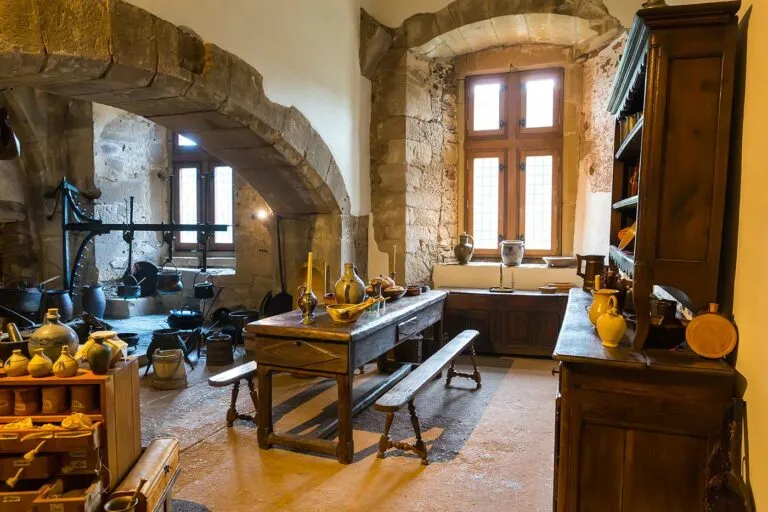
To find authentic vintage items, explore flea markets, antique stores, and online marketplaces. Local estate sales are excellent sources for unique finds. When purchasing vintage items, inspect them carefully for condition and authenticity. Look for items that show signs of age, as this adds to their charm. Consider the history of the item, and try to find pieces that reflect the daily life of the 1800s. Always ensure items are cleaned and safe for use. Websites like Etsy, eBay and specialized antique websites are good resources. Building a collection of vintage items is a rewarding experience, transforming your kitchen into a unique space.
Where to Find Vintage Decor
Apart from the antique stores and flea markets, there are other great places to source vintage decor. Consider visiting local auctions, where you can find unique pieces at affordable prices. Online marketplaces like Facebook Marketplace often have local sellers offering vintage items. Check out architectural salvage yards for unique finds like vintage lighting fixtures and reclaimed hardware. Thrift stores can also be a treasure trove for finding kitchen essentials. Local consignment shops are another source of well-curated vintage pieces. Being patient and persistent will help you discover rare gems and create a kitchen that is truly unique.
Tip 4 Focus on Practicality
1800s summer kitchens were designed with practicality in mind. Every element had a function, and the focus was on efficiency. Designing for practicality involves creating a kitchen that is easy to use, organized, and conducive to the tasks of food preparation and storage. Prioritizing functionality ensures your kitchen is both beautiful and efficient. The emphasis on practicality in the original summer kitchens stemmed from the need to make the most of limited resources and space. By applying these principles, you can create a kitchen that is both charming and highly functional.
Designing for Functionality
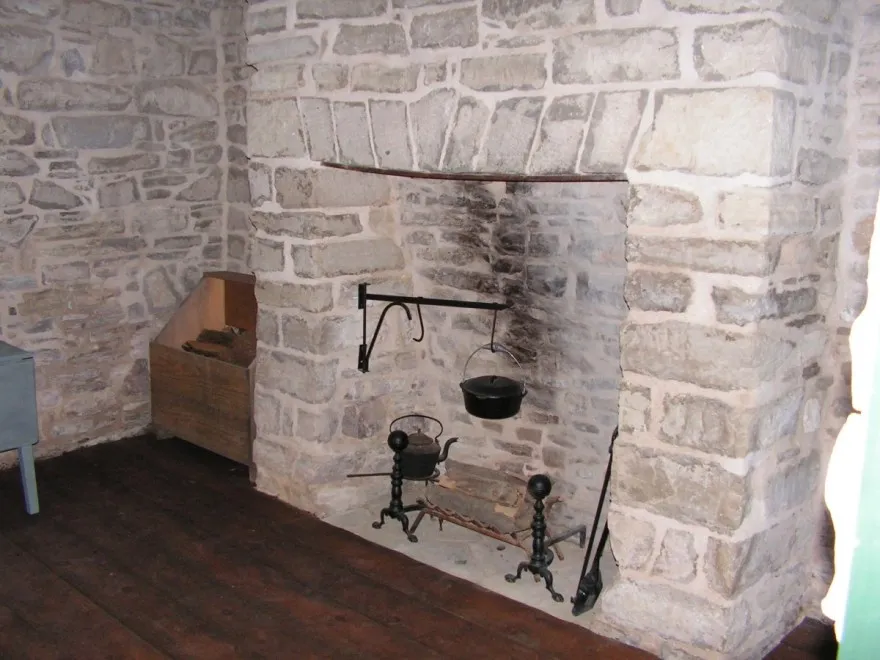
To design a functional kitchen, consider your cooking and food preparation habits. Ensure the layout of the kitchen facilitates workflow. Prioritize easy access to frequently used items and create zones for different activities, such as food prep, cooking, and cleaning. Incorporate ample counter space for food preparation. Choose durable and easy-to-clean surfaces. Install well-placed storage solutions, such as open shelves and pantries, to maximize space and keep the kitchen organized. Select appliances that fit the style of the kitchen but are also energy-efficient. A well-designed kitchen should make cooking an enjoyable experience.
Organizing Your Summer Kitchen
Organization is key to a functional kitchen. Utilize open shelving to display frequently used items like dishes and cookware. Install a pantry to store dry goods and canned items. Use drawers and cabinets with organizational features to maximize storage space. Consider using baskets and jars to store ingredients and utensils. Label everything clearly to make it easy to find what you need. Keep counters clear by storing small appliances. Implementing these strategies will maximize the functionality of your kitchen while maintaining its rustic charm.
Tip 5 Add Seasonal Accents
Seasonal accents add a touch of freshness and charm to your summer kitchen, mirroring the changing seasons and the connection to the outdoors. Adding seasonal accents is a great way to celebrate the beauty of nature and incorporate fresh elements into your kitchen. These accents can be as simple as a bowl of fresh fruit or a bouquet of flowers. By incorporating seasonal elements, you can create a kitchen that is both inviting and reflective of the natural world.
Choosing Seasonal Colors
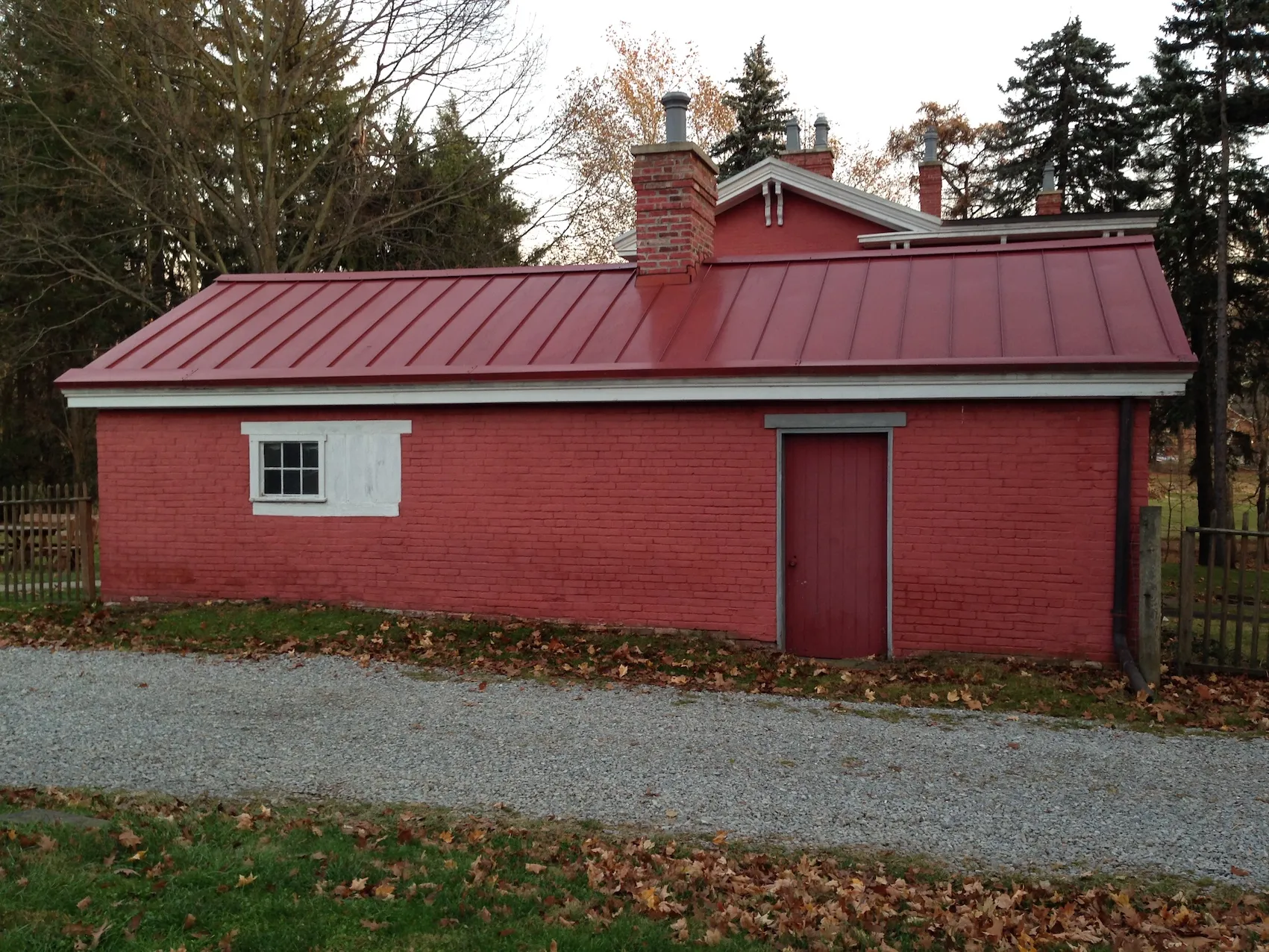
When choosing seasonal colors, opt for hues that reflect the time of year. In summer, incorporate colors like bright yellows, fresh greens, and soft blues. Consider using these colors for textiles, such as dish towels, curtains, and tablecloths. Incorporate these colors through decorative items, like ceramic pieces or bowls. Changing your color palette with the seasons can instantly refresh your kitchen. Using these colors is an easy and effective way to bring the feeling of summer into your home.
Adding Fresh Herbs and Flowers
Fresh herbs and flowers are the perfect finishing touch for a summer kitchen. Herbs not only add visual appeal but also offer fresh ingredients for cooking. Place potted herbs on a windowsill or counter. Flowers add color and fragrance, bringing the outdoors in. Choose seasonal blooms such as sunflowers, daisies, or wildflowers. Arrange flowers in vintage vases or mason jars. Incorporating fresh herbs and flowers is a simple way to connect your kitchen to the seasons, enhancing its charm and making it more inviting.
In conclusion, creating a summer kitchen in the 1800s style is a rewarding project that brings history and charm into your home. By focusing on natural light, rustic materials, vintage decor, practicality, and seasonal accents, you can create a kitchen that is both beautiful and functional. Remember to embrace the simplicity and connection to nature that defined these kitchens. With these five tips, you’re well on your way to transforming your kitchen into a space that embodies the warmth and timeless elegance of the 1800s. Happy decorating, and enjoy the journey of bringing a piece of history into your home!
